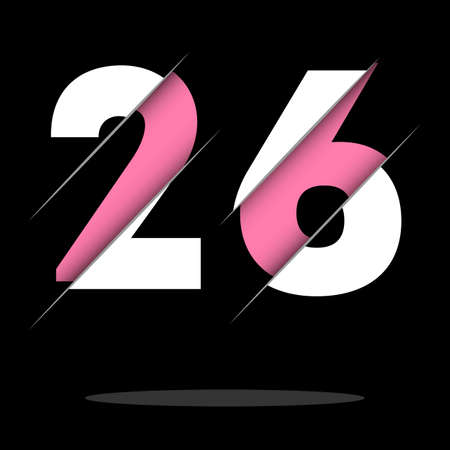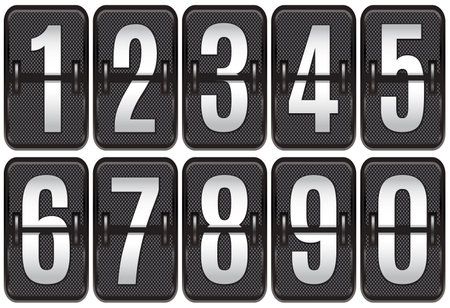Introduction to the I Ching: History and Philosophy
The I Ching, often translated as the “Book of Changes,” is one of the oldest and most influential texts in Chinese civilization. Its origins trace back over three millennia, rooted in the early Zhou Dynasty (c. 1046–256 BCE), though some traditions attribute its beginnings to even earlier times. The I Ching’s primary function is to offer guidance through a unique system of hexagrams—symbols composed of broken and unbroken lines—each associated with specific philosophical meanings and practical advice. Over centuries, it has become a foundational pillar in Chinese thought, deeply intertwined with Confucianism, Daoism, and later schools of philosophy. When the I Ching made its way to the West in the late nineteenth and early twentieth centuries, it was often interpreted through the lens of Western esotericism and psychology, particularly after influential figures like Carl Jung engaged with its ideas. This transmission brought both interest and misunderstanding, laying the groundwork for many misconceptions that persist in America today. To understand why these stereotypes arose, it is essential to appreciate the I Ching’s rich historical context and its original philosophical purpose in Chinese culture.
2. Common Misconceptions in American Culture
Despite its ancient roots and philosophical depth, the I Ching is often misunderstood in the United States. Many Americans tend to equate the I Ching with mere fortune telling or dismiss it as superstition. These misconceptions stem from a lack of exposure to its original context and a tendency to interpret Eastern traditions through a Western lens.
Confusing the I Ching with Fortune Telling
One widespread misunderstanding is that the I Ching functions purely as a tool for predicting future events, similar to tarot cards or crystal balls. In reality, while the I Ching can be used for divination, its primary purpose lies in offering wisdom, guidance, and insight into personal situations. It encourages self-reflection and decision-making rather than providing concrete predictions.
Superstition vs. Philosophy
Another stereotype prevalent in American culture is that the I Ching is rooted in superstition or magical thinking. This view overlooks the texts philosophical significance in Chinese culture, where it has been studied by scholars, strategists, and leaders for centuries. The I Ching is deeply connected to concepts such as change, balance, and harmony—ideas that resonate far beyond mere superstition.
Comparison Table: Fact vs. Fiction
| Misconception | Reality |
|---|---|
| The I Ching predicts specific future events. | The I Ching provides guidance and insight based on changing circumstances. |
| The I Ching is just another form of fortune telling. | The I Ching is a philosophical classic used for reflection and decision-making. |
| The I Ching is rooted in superstition. | The I Ching is a respected work of philosophy and cosmology in Chinese history. |
By examining these misconceptions, it becomes clear that the I Ching deserves deeper understanding and appreciation within American culture, moving beyond stereotypes to recognize its true value.

3. Hollywood and Pop Culture: Distorted Representations
In America, the I Ching is often filtered through the lens of Hollywood and popular culture, resulting in a range of misconceptions and exaggerated stereotypes. Movies, TV shows, and best-selling novels have frequently depicted the I Ching as a mystical artifact or a fortune-teller’s prop, rather than as a complex philosophical text with deep historical roots.
Caricatured Portrayals in Film and Television
Film and television have played significant roles in shaping how Americans perceive the I Ching. Frequently, it appears as an exotic object associated with mysterious Eastern wisdom, used by characters to foretell the future or make dramatic decisions. This oversimplification strips away the nuance and depth of the I Ching’s actual use in traditional Chinese culture, where it serves as a tool for reflection, ethical guidance, and self-examination rather than mere prediction.
Popular Literature’s Influence
Bestselling novels and self-help books have further cemented these stereotypes. Authors often introduce the I Ching as an “ancient oracle,” glossing over its philosophical dimensions in favor of sensational stories or quick fixes. As a result, many readers come to see it as little more than a magical device for answering life’s questions, rather than a structured system rooted in centuries of intellectual tradition.
Cultural Impact: Fact vs. Fiction
This widespread misrepresentation in pop culture has created a gap between fact and fiction. While some Americans may approach the I Ching with genuine curiosity, their understanding is often colored by these distorted portrayals. Bridging this gap requires moving beyond cinematic tropes and literary clichés to appreciate the I Ching’s real role—as both a classic of world literature and a practical guide to thoughtful decision-making.
4. Fact vs. Fiction: What the I Ching Really Teaches
When examining the role of the I Ching in American society, it is essential to distinguish between widespread myths and what this ancient text truly offers. While many Americans may see the I Ching as a mystical tool for fortune-telling or magic, its authentic uses are deeply rooted in philosophy, ethics, and practical life guidance. The table below highlights some of the most persistent misconceptions versus the actual teachings of the I Ching:
| Common Misconceptions | The I Ching’s True Teachings |
|---|---|
| The I Ching is only for telling the future. | The I Ching provides philosophical reflection and encourages self-examination. |
| It promotes magical thinking and superstition. | The text focuses on ethical decision-making and understanding change in life’s circumstances. |
| Using the I Ching is a form of occult practice. | The I Ching’s roots are grounded in classical Chinese philosophy and rational inquiry. |
Philosophical Foundation Over Mysticism
At its core, the I Ching is not about magical predictions but about understanding patterns of change and finding balance amid uncertainty. Its structure—64 hexagrams with accompanying texts—invites users to reflect on their current situation and consider possible outcomes based on timeless wisdom rather than supernatural intervention.
Ethical Guidance for Everyday Life
The ethical teachings of the I Ching emphasize virtues such as humility, perseverance, and adaptability. It teaches that good fortune results from right action, while misfortune often comes from ignoring ethical principles. In this way, the I Ching serves as a moral compass rather than a magic eight ball.
Practical Application in Modern America
Today, many Americans turn to the I Ching not for mystic answers but for its practical advice on navigating relationships, career decisions, and personal growth. By prompting thoughtful questions rather than giving fixed answers, the I Ching aligns well with American values of self-reliance and critical thinking. Ultimately, recognizing these distinctions helps to dispel myths while honoring the true depth of this ancient classic.
5. The I Ching in Modern American Spirituality
The I Ching and the Quest for Meaning
In contemporary America, the I Ching occupies a unique position among spiritual seekers who are searching for guidance, self-awareness, and deeper meaning beyond traditional religious boundaries. Unlike its historical function as a tool for statecraft or familial decision-making in China, many Americans turn to the I Ching as a personal oracle, often integrating it into private rituals of reflection or self-discovery. This adaptation reflects both the flexibility of the text and the American spirit of individualism.
New Age Interpretations and Community Practices
The rise of New Age communities in the United States has further reshaped perceptions of the I Ching. Within these circles, the I Ching is frequently employed alongside tarot cards, astrology charts, and other divinatory systems. However, unlike some imported practices that remain niche or exoticized, the I Ching has been embraced for its perceived universality and psychological depth. Workshops, study groups, and online forums allow practitioners to share interpretations and personal experiences with the hexagrams, creating a new communal context far removed from its Confucian roots.
The Intersection with Mindfulness and Meditation
Another significant development is the integration of the I Ching into mindfulness practices. As meditation and mindfulness have become mainstream in American wellness culture, practitioners have found that consulting the I Ching before or after meditation can enhance introspection and foster present-moment awareness. Rather than focusing solely on fortune-telling, this approach emphasizes using the text as a tool for contemplation—encouraging users to reflect on their current life circumstances and possible paths forward.
Navigating Fact vs. Fiction
Despite its growing popularity, misconceptions persist about what the I Ching actually offers within modern American spirituality. Some believe it promises concrete answers or magical solutions to life’s challenges—a stereotype that overlooks its real value as a prompt for self-inquiry and ethical consideration. The fact is that most committed users in America view the I Ching not as a deterministic oracle but as a sophisticated framework for examining one’s motives and actions. By acknowledging both its cultural origins and contemporary adaptations, spiritual seekers can engage with the I Ching in a manner that honors tradition while remaining relevant to American values of exploration and self-empowerment.
6. Challenges and Opportunities for Cross-Cultural Understanding
The I Ching, as a cornerstone of Chinese philosophy and culture, has faced numerous misunderstandings and misinterpretations in its journey across the Pacific to America. While its wisdom has intrigued scholars, spiritual seekers, and curious minds alike, it is also subject to misconceptions rooted in cultural stereotypes, lack of context, or superficial engagement. These challenges pose significant obstacles to genuine cross-cultural understanding but also highlight important opportunities for growth.
Barriers to Accurate Appreciation
One of the main challenges is the persistence of orientalist attitudes—where the I Ching is viewed through an exoticized or mystical lens rather than as a complex and deeply philosophical text. This perspective often leads to oversimplification or commercial exploitation, reducing the I Ching to mere “fortune-telling” or novelty without regard for its historical roots or intellectual rigor. Furthermore, language barriers and limited access to quality translations can distort meanings and hinder deeper comprehension among American readers.
The Role of Education
Increasing cultural sensitivity through education is crucial in overcoming these hurdles. Academic courses, public lectures, and accessible resources that accurately present the I Ching’s origins, structure, and role within Chinese thought can dispel myths and foster respect. Educators and practitioners should emphasize the text’s philosophical depth, its connection with Confucianism and Daoism, and its practical applications beyond divination. By contextualizing the I Ching within both Eastern and Western traditions, we open avenues for meaningful dialogue and mutual enrichment.
Embracing Diversity and Dialogue
Promoting authentic appreciation of the I Ching requires ongoing cross-cultural exchange. Encouraging collaboration between Chinese scholars and American interpreters can bridge gaps in understanding, while creating inclusive communities of study allows for diverse perspectives to surface. As Americans engage with the I Ching not merely as consumers but as thoughtful students, there is great potential to move beyond stereotypes toward a nuanced grasp of its teachings.
In summary, while misconceptions about the I Ching persist in American society, they also illuminate pathways toward greater awareness. Through intentional education and open-minded cultural interaction, Americans can develop a richer, more accurate relationship with this ancient text—transforming both personal insight and collective understanding in the process.


